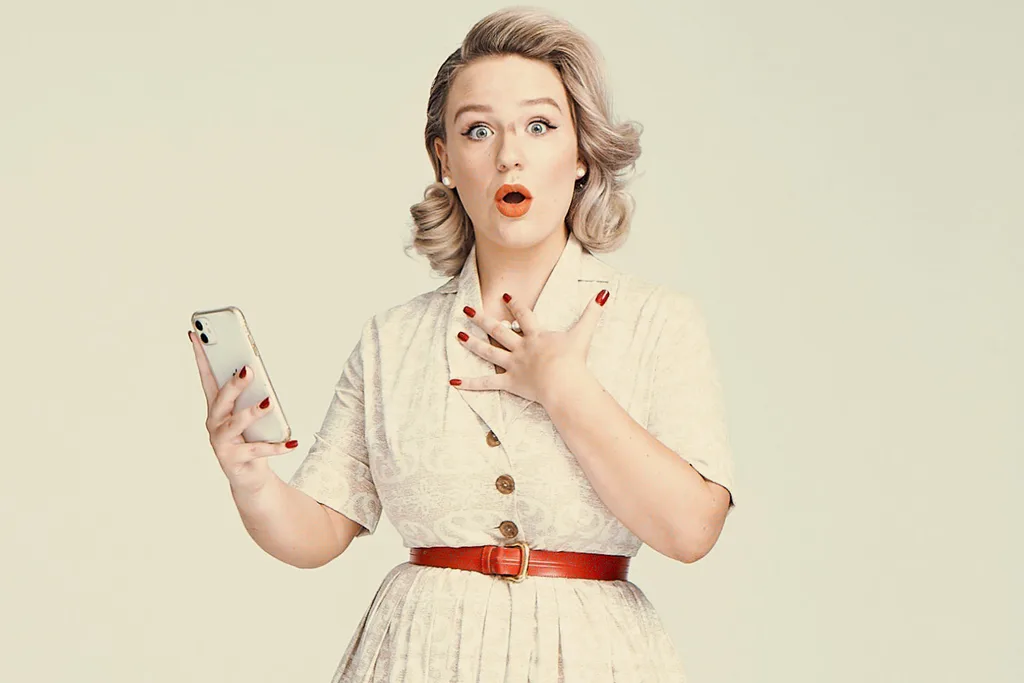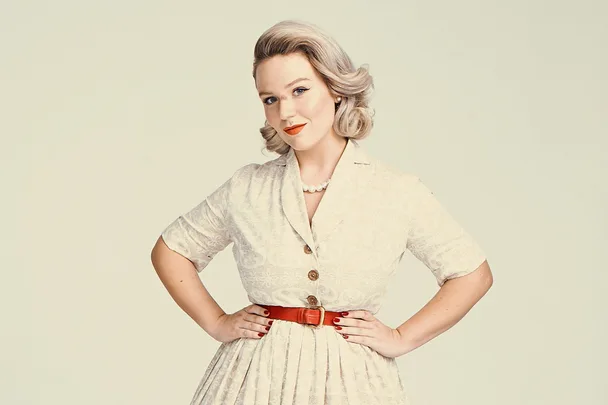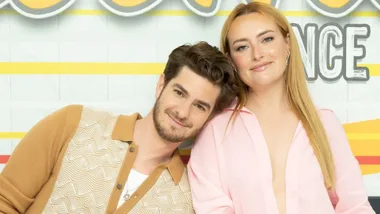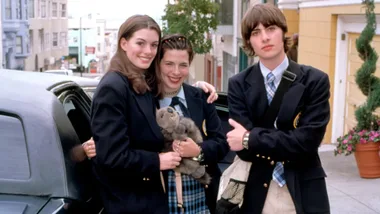My therapist was talking about a game.
Seated on the plush cream sofa in her office, eyes damp and stinging, I didn’t get what her gaming hobby had to do with me.
“You see, Courtney, I enjoy playing and talking to the people I game with, but when it’s over, I can put it away and not let it affect my life,” she said. “Because the world I enter when I game, it isn’t real.”
There it was.
Unlike my therapist, I’m not a gamer…per se. Depending on how you look at it, the game I play is far more treacherous: I use dating apps. I am what you’d call a veteran of online dating. I’ve signed up to OkCupid, swiped on Tinder, messaged on Bumble, made prompts on Hinge, flirted with Feeld and was even accepted by the celeb-favourite and exclusive Raya. The online dating boom coincided with my graduation from high school and relocation to the city, meaning the vast majority of my love life has played out digitally. I eventually got bored of the traditional dating app options and discovered that platforms such as Instagram were also potential avenues for romantic connection.
None of this is revelatory; Meg and Tom were falling in love over email in 1998, catfishing was a phenomenon worth its own television show in 2012, and a 2019 Stanford study confirmed online dating is now the most popular way people find partners. But 2020 took our reliance on digital forms of connection to a whole new level, as we were forced inside and starved of real-life social interaction. In December, Hinge reported that since the pandemic took hold, one in three users have felt a greater sense of urgency about finding someone.
Personally, my digital life started taking on an almost parasocial dynamic last year, whereby I developed emotional attachments to people I’d never met. This isn’t inherently problematic, but the issue in my case was that I also didn’t really know them, and they certainly didn’t reciprocate my feelings. Plus, when you’re in tears because someone’s hidden your comment on their Instagram profile, it’s probably time to reconsider things. After all, how well can you really know someone you’ve only ever seen on the other side of a FaceTime call? (In my case, not very well.)

Which brings us back to my therapist’s couch. The message was crystalline: so long as they exist solely online, those relationships aren’t entirely real. Leaving her office, I had the distinct feeling of not only wanting to delete every app on my phone, but to throw the entire thing into the Pacific. I knew something needed to give when a friend asked, “When was the last time you met a romantic interest offline?” and I couldn’t remember. Three years ago? Five? It’s hard to imagine a world where finding connection – romantic or purely sexual – wasn’t so convenient, where chivalry was a thing and dick pics weren’t. Would those connections be more genuine and reciprocal without being facilitated by a screen?
Enter, McCall’s magazine.
Launched in 1873, McCall’s was a monthly American women’s magazine that published advice columns by Eleanor Roosevelt, film critiques by Pauline Kael, fashion and sewing patterns. At the peak of its success, it was one of the most popular large-format glossies for women. Crucially, it also published detailed manuals on how to find a man. One such article from 1958, titled “129 Ways to Get a Husband”, recently resurfaced on Twitter, sending the internet into a tailspin with its brash but intriguing advice. Organised into five sections, it canvassed an array of avenues to find, impress and hold onto a man, ranging from the predictably mundane (“Don’t be too fussy”) to the completely absurd (“Stow away on a battleship”). More than 60 years later, I was drawn to the simplicity of having an instructional manual and a portal back in time that might answer my nagging questions about whether my relationships were tainted by the digital.
For context, in 1958, the crude marriage rate in Australia was 7.8 marriages per 1000 estimated population (it’s now 4.5). Phones were still a rare household item, married women couldn’t work in the Commonwealth Public Service and Germaine Greer’s The Female Eunuch and her suggestion that women taste their own menstrual blood was still 12 years off. As a 26-year-old single woman, I would have very genuinely be classed a spinster.
Considering I once danced on the parliament lawns as a giant tampon, have previously referred to myself as a ‘relationship anarchist’ and at 16, vowed to never get married, I’m maybe the last person you’d expect to take the advice of a 1950s women’s magazine, especially one that was explicitly espousing the benefits of institutionalised heterosexual coupledom.
But at this point, I want nothing more than to go back to basics and unplug my heart. It’s not like I’m actually looking to get married. Hell, I’d be happy with someone who makes me laugh and replies promptly…God, the bar! Has it ever been so low?!

But I digress. I set about strategising: I’ve already started talking to a few guys online, so I reason it makes sense to go on dates with them and try out tips from sections two and three: “How to let him know you’re there” and “How to look good to him”. I’ll admit, the last time I consciously dressed for the benefit of a man was probably when I was 17 and desperate to get the attention of some boys at the holiday park where I was staying. I wore a colourful pair of wedges to the NYE party, stacked it twice and never spoke to the boys. But I’m older now and my shoe collection has come a long way.
I excitedly schedule a date with a cute lawyer and scour the list for advice. I settle for #45: “Laugh at his jokes”, #52: “Wear high heels” and #54: “Tell him he’s handsome”. I also reluctantly commit to #36: “Learn several funny stories and learn to tell them well” and #108: “Don’t tell dirty stories”. I’m reluctant because there’s nothing funnier to me than sex and so many of my best stories involve it, but I roll my eyes, remind myself the writers of the list were probably sexually repressed and decide to comply.
On the date, conversation flows freely and I forget the rules altogether because I’m having such a good time. It’s one of those easy first dates that induce amnesia about all the bad ones. I feel quietly confident I’ll hear from him again, but two days later when there’s still no text, worry sets in. I know the list would want me to wait but I decide to message, because fuck it. He responds two days later telling me he wound up in hospital and that maybe in two weeks we should hang. I never hear from him again.
I return to the list.
Tip #40 tells me to “Stand in a corner and cry softly”. I’m dubious. I mean, if that was a truly effective method of nabbing a husband surely I’d have been through my third divorce by now? I suppress my doubts, however, and plan to find a pub to cry in. I text my best friend asking him to sit across the bar for moral support. “Have you considered the current COVID restrictions and how that may hinder your chances of, A) getting a table by yourself and B) having a human approach you from theirs?” he replies. I had…not. Right, well. The 1950s might have found 129 ways to get a husband but it certainly didn’t plan for getting cockblocked by a pandemic, did it?
Speaking to relationship coach Tanya Koens, she tells me the likelihood of being approached in public had become less common, even before COVID. “It’s the fear of being misconstrued as That Guy,” she says. “There’s shit behaviour online because of the patriarchy and also because some people just aren’t very nice. But there are some really genuine people out there, too, who are suffering as a result of that kind of rubbish. That’s making it hard for them in real life because they don’t want to be perceived as That Guy or That Girl; they’re more shy about approaching people because they don’t want to be a pest.”
Not to worry, there are still plenty of options left. I resolve to attempt #38 and #122 the next day at work in the city. The former – “Dropping a handkerchief still works” – intrigues with its declarative confidence, and the latter – “Carry a camera and ask strange, handsome men if they would mind snapping your picture” – seems easy enough. I bring a pair of heels, wear a cute skirt and substitute the handkerchief for my bright-pink Hermès scarf – no-one can possibly miss it. I spend a solid 20 minutes devising an effective and casual scarf-dropping strategy (you’d be surprised how difficult it is to make dropping a scarf appear unintentional without your arm looking like it’s possessed) and leave the office feeling ready to have the men of Sydney fawn over me.
Apparently, the men of Sydney had other ideas. Five minutes in, I spot a dashingly rugged man on the street – perfect! – and as I walk by, quickly dislodge the scarf. I keep walking and…nothing. Five seconds pass and I hear nary a “Ma’am.” I turn around to see my beautiful scarf on the ground and the man in question totally oblivious to my attempt at engineering a meet-cute. Well, fuck. I’m determined not to let this deter me, so continue on. I drop the scarf five times, with only two of them resulting in a man picking it up. The two who do, walk away before I even finish saying “Thank you.” When I stand by a monument that I might feasibly want my picture taken beside, the situation grows dire. All of the men who walk by are either old enough to be my dad, or old enough to be my granddad. To make matters worse, the security guard stationed by the monument starts trailing me as I loiter, so I’m pretty sure he’s convinced I’m a drug dealer. I give it 10 more minutes before deciding the only thing more dead than chivalry is my Monstera and call it a day.
At this point, it’s time to turn to the final section: “Wild ideas – anything goes”. I’m not Rory Gilmore, so harbour no desire to enrol at Yale as #111 suggests. I choose #115: “Rent a billboard”. After finding out a Sydney billboard will set me back four months’ salary, I realise I need to get creative. I workshop ideas with friends and am left with the unfortunate fact that I must return to the very thing that I sought to escape. What’s as obnoxious and effective as a billboard in declaring your single status – and interest in being asked on a date – to a large group of people? A post on Instagram, duh. Admittedly, it’s a small billboard as I only have 1200 followers, but who knows – maybe someone will come out of the woodwork and surprise me?
Dear reader, no-one came out of the woodwork. After posting a bikini photo, with a caption announcing my eligibility, I get a grand total of five offers: four from interstate or overseas (absolutely no use) and one from a guy who’s asked me out three times before and flaked every time. I agree to a date, organise a time and figure I’ll leave it up to him to sort out a place and confirm on the day. Guess what? I call him Maldon* now.
It’s tempting to indulge nostalgia and tell ourselves that our problems wouldn’t be problems if we returned to “simpler” times, when external factors such as dating apps or social media weren’t, well, factors. It turns out finding love – or even a date – is fraught whether you’re abiding by the rules of 2021 or 1958. These things, like most of life’s greatest gifts, are just kind of random. Love isn’t a test you can study for; your chances of finding romantic love aren’t increased by completing a checklist or swiping ’til your thumb twitches. And you shouldn’t wait for someone to pick up your scarf when you can do it yourself. Here’s hoping that my therapist agrees.
This feature originally appeared in the March issue of marie claire Australia, on stands now.
*Maldon as in, the box of salt flakes, if that wasn’t obvious.
 Image: Peter Brew Bevan
Image: Peter Brew Bevan









